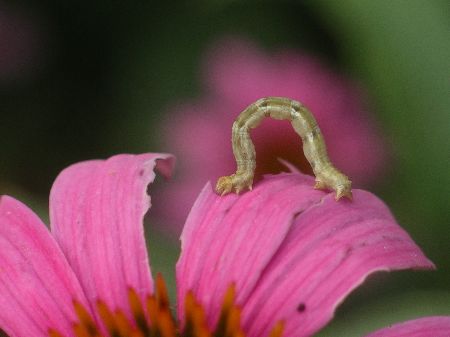
I go out on exercise walks with our dog in the early mornings. We use places with sidewalks or well-established trails and do not dawdle or stop too often. Sometimes it is still too dark to see much anyway. If we do see something of interest, we only pause briefly and then are on our way again. After all, our goal is exercise, not observation.

Other times I go out with the main goal being nature viewing and photography, and never expect to cover much ground. In fact, I might spend an hour and travel only yards, not miles. I probably get more exercise in stooping down for a better look and then getting up again than in actually walking. A 2.5 hour session might take me over a mile of terrain at most. I have also gone on group walks for everything from birdwatching to spider hunting. The annual butterfly count in the middle of summer is a lot of fun, and I participate in monthly biological surveys with the Texas Master Naturalists in Zilker Preserve, a wild area right in downtown Austin. During all of these, the goal is to see and learn about the plants and animals. We travel slowly, taking time to look at anything that any member of the group happens to see and point out.
The difference between the rapid trail hike and the much slower nature walk struck me as quite pronounced. Many people love to get out and hike for miles at a time. They might take in the nice vistas, see large mammals or birds along the way, or have a distant canyon, lake, or archaeological ruins as their goal. I'm more interested in seeing nature close up, and can spend a couple of hours just walking around a small park, wandering on and off the trail to inspect whatever piques my curiosity. The term "nature stroll" is probably a good description of this slower paced activity. It doesn't give the same outdoorsy impression as "hike," but then I'm not out to meet anybody else's standards on how to enjoy our natural surroundings.
One unintended advantage of this relatively relaxed way of experiencing nature is that it is appropriate for all ages, from very young children to aged folks who have limited mobility. Perhaps this is why our butterfly watching field trips attract many people who could not keep up on a long and strenuous jaunt. While an energetic hiker might be bored by the slow pace, an ardent nature watcher can stay fascinated for hours within a small area. It's just a matter of how close one wants to look and how deeply one wants to study the wildlife.
So, even as we endure 100+°F days here in central Texas, I still go out many mornings for at least a couple hours of nature watching and photography. I can stand the heat just a little longer if I'm not exerting myself too much, so the slow pace suits me just fine, and I'll continue ambling along on my nature strolls.